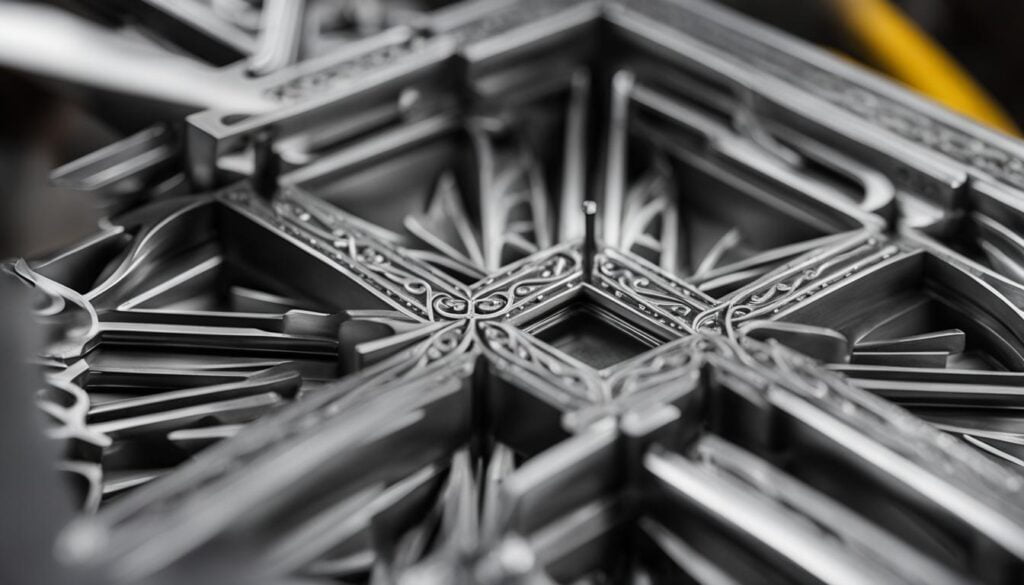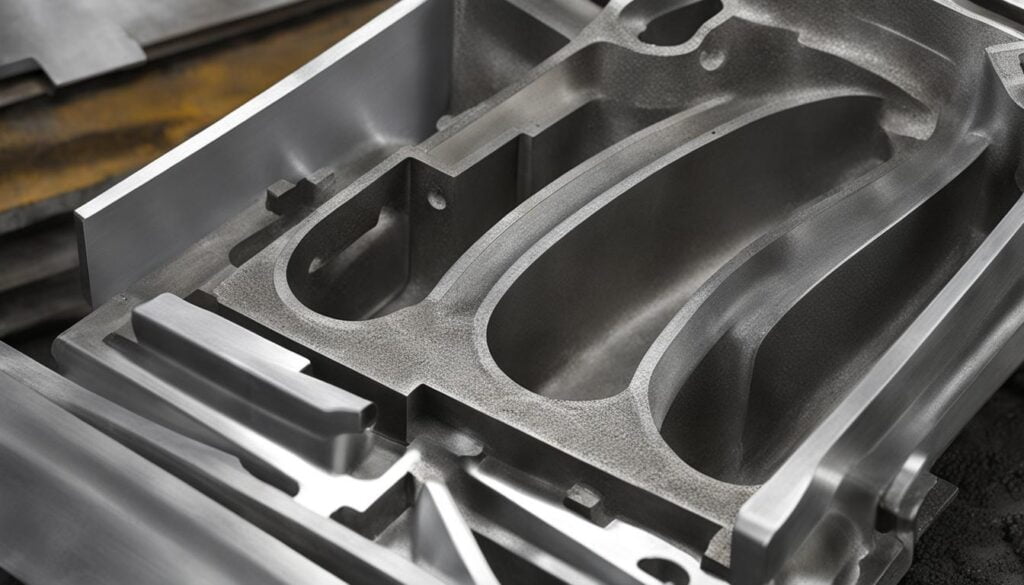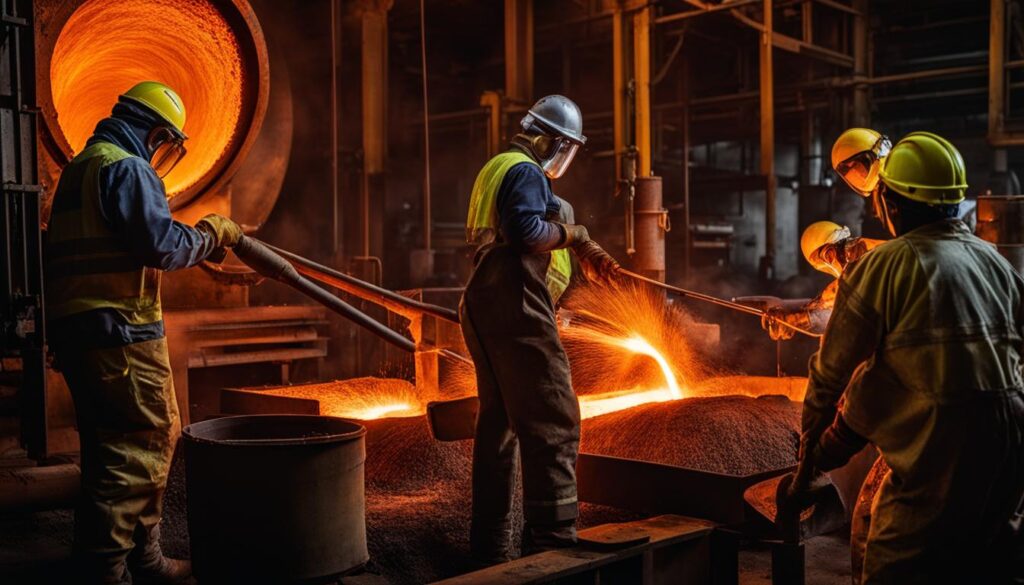Shell molding, also referred to as shell mold casting, is a precise casting process suitable for alloy steel and has six main steps. It begins with creating a metal pattern, usually from iron or steel, which determines the shape of the finished casting. The next phases involve heating pattern parts and covering them with resin-coated sand to create a robust mold, assembling the pattern parts, and pouring in molten metal to form the shell casting. After cooling, the casting is ejected. This process is leveraged by KT-Foundry to manufacture high-precision components such as gearbox housings and connecting rods with tight tolerances, often reaching 0.005 mm/mm, and excellent surface finishes in the range of 0.3–4.0 micrometers. Shell molding is favored for small to medium parts requiring high precision and is applicable to both ferrous and non-ferrous metals like cast iron, carbon steel, stainless steel, aluminum alloys, and copper.
Key Takeaways
- Shell molding, or shell mold casting, is ideal for creating high-precision alloy steel castings.
- The process involves creating a metal pattern, coating it with resin-infused sand, assembling the mold, and pouring molten metal.
- Shell molding can achieve tight tolerances and excellent surface finishes in alloy steel components.
- The technique is suitable for both ferrous and non-ferrous metals, including cast iron, carbon steel, stainless steel, aluminum alloys, and copper.
- Overall, shell molding is an efficient and effective method for producing small to medium precision castings in various industries.
Understanding the Basics of Shell Molding
Shell molding is a casting process similar to sand casting, which involves pouring molten metal into a specialized shell mold created by a mixture of sand and resin surrounding a pattern. This method allows for the reusability of the pattern, generating multiple molds and making it highly efficient for increased production rates. The creation of thin-walled molds enables intricate geometries and superior finishes compared to conventional sand molds. Thanks to its high productivity and reduced labor needs, the shell molding process is extensively used in the manufacturing of small to medium high-precision parts across various industries, including automotive, aerospace, and medical fields.
One of the essential aspects of shell molding is the use of resin-infused sand in the mold creation process. This serves to produce a rigid mold that can withstand the pressure exerted by the molten metal while offering excellent dimensional stability in the final part. The resin-sand mixture ensures a high degree of precision and detail in metal casting while allowing for minimal defects, such as shrinkage and porosity. Here is an overview of the key benefits of shell molding:
- High production rate and mold reusability
- Superior tolerance control and dimensional stability
- Excellent surface finishes requiring minimal post-processing
- Ability to cast complex shapes and intricate geometries
For a better understanding of the shell molding process, Table 1 highlights the differences between shell molding and conventional sand casting in terms of process characteristics and part quality.
| Process Characteristics | Shell Molding | Sand Casting |
|---|---|---|
| Mold Material | Resin-infused sand | Green or dry sand |
| Process Complexity | Medium | Low |
| Production Rate (per pattern) | High | Low |
| Dimensional Stability | Excellent | Good |
| Surface Finish | Smoother | Rougher |
| Minimum Wall Thickness Possible | Thinner (0.5-2mm) | Thicker (2-5mm) |
Designing the Metal Pattern for Shell Molding
The creation of a metal pattern is paramount in shaping the finished alloy steel casting. Patterns typically consist of two metal pieces, often of iron or steel, intricately shaped to the specifications of the desired part. The pattern serves as a reusable template to mold countless shell molds, facilitating mass production. To cast reactive metals, alternative patterns made of graphite may be utilized.
As an essential part of metal pattern design in precision casting, careful attention must be paid to the intricacies of both iron and steel patterns. The detailed design and fabrication of each pattern must embody the exact specifications, ensuring the desired part is produced accurately. Several factors contribute to the effectiveness of the casting design:
- Dimensional tolerances
- Material properties
- Pattern life expectancy
When it comes to metal patterns, quality and precision are closely interrelated, as accuracy will invariably determine the performance of the end product.
Industry professionals expertly oversee the process of creating design specifications for patterns, considering factors such as the desired alloy and its properties, final part dimensions, and the anticipated life of the pattern. This attention to detail results in a precise, efficient casting process that yields high-quality alloy steel castings.

As each metal part demands its unique properties, alternative material options may need to be considered during the design stage. In certain instances, graphite patterns may be employed to cast reactive metals. These heat-resistant, high-tolerance patterns create the perfect environment for reactive metal castings.
In essence, the metal pattern’s design plays a crucial role in achieving high-quality, precision castings, making it a critical aspect of the shell molding process at KT-Foundry.
Molding Preparation: Creating a Robust Shell Mold
In the mold preparation phase, pattern parts are heated and coated with resin-sand mixture, eventually forming a strong shell mold. This phase consists of two crucial steps: the heating phase and mold shell creation, followed by lubrication and sand application.
The Heating Phase and Mold Shell Creation
Pattern heating is a vital component of creating a robust shell mold. The metal patterns are heated to temperatures ranging from 175 ºC to 370 ºC. Once heated, the patterns are placed within a dump box containing a resin-coated sand mixture. This initiates the curing of the resin, resulting in the formation of a strong mold shell.
Lubrication and Sand Application
Mold lubrication is essential for ensuring easy removal of the finished casting from the mold. The heated patterns are typically lubricated with calcium stearate before applying the resin-sand mixture. Upon lubrication, the patterns are coated with the resin-sand mixture, causing the resin to cure and create the robust half-shells that will form the complete mold.
Mold heating and lubrication play a critical role in the successful creation of durable shell molds, essential for accurate and precise alloy steel casting.
Throughout the molding preparation process, attention to detail is crucial in obtaining the desired mold characteristics. The pattern heating, resin-coated sand application, and proper lubrication all contribute to creating a strong and accurate mold, which is vital for producing high-quality alloy steel castings.
Next, we’ll discuss the process of assembling the mold halves and preparing the casting flask to house the completed shell mold.
Assembling the Pattern Parts
Upon successful curing, the shell halves are ejected from the pattern parts and assembled together using a methodical process. This pattern assembly is an integral step in the shell mold casting process, as it ensures the accurate formation of the final casting. The assembly process begins with preparing the casting flask, which will house the mold during casting.

The casting flask serves as a container for the shell mold halves, guaranteeing stability during the casting process. It is crucial to precisely align the shell halves in accordance with the metal pattern’s design to ensure the final cast part maintains its desired geometry and dimensions. Once the halves are positioned correctly, they are secured within the casting flask, creating a complete mold for the subsequent casting step.
- Place the first shell half in the casting flask, taking care to align it with the flask walls.
- Position the second shell half on top of the first, ensuring accurate alignment of the mold cavities.
- Secure both shell halves within the flask using metal shots to fill any gaps between the mold and flask walls.
To achieve a tight seal between the shell halves and flask walls, metal shots are employed, minimizing the risk of metal leakage during the casting process.
The accuracy and precision of the pattern assembly play key roles in determining the quality of shell mold casting. Proper alignment and adherence to assembly guidelines contribute immensely to the final casting’s dimensional stability and overall structural integrity.
Pouring Molten Alloy: The Casting Process
Successful shell molding depends on both the selection of suitable materials and precise control over the metal pouring process. The choice of ferrous and non-ferrous materials for shell molding largely depends on the desired properties and functionality of the final part.
Selection of Alloy Steel Materials for Shell Molding
Molten alloy selection between ferrous and non-ferrous materials is critical in the shell molding process. Ferrous materials, such as carbon steel, stainless steel, and alloy steels like 20Mn and 42CrMo, are often used due to their strength and machinability. On the other hand, non-ferrous materials like aluminum alloys and copper are selected for their lightweight, corrosion resistance, and thermal conductivity.
| Material | Characteristics | Common Applications |
|---|---|---|
| Carbon Steel | High strength, machinability, and weldability | Automotive components, construction equipment, machinery parts |
| Stainless Steel | Corrosion resistance, durability, and attractive appearance | Medical equipment, food processing, aerospace components |
| Aluminum Alloys | Lightweight, corrosion resistance, and thermal conductivity | Electronics, automotive, aerospace, and marine applications |
| Copper | Excellent electrical conductivity and thermal conductivity | Electrical components, heat exchangers, and plumbing fittings |
Achieving Precision with Controlled Metal Pouring
Once the appropriate material is chosen, precision metal pouring is essential for creating high-quality castings. This process involves carefully pouring the molten metal into the assembled mold halves, ensuring a precise and uniform fill.
Controlled casting can be performed manually or using automated machinery, with the latter offering advantages such as increased precision, repeatability, and efficiency. Regardless of the method, molten metal processing plays a crucial role in realizing the full potential of shell molding’s high accuracy and intricate capabilities.
Post-Casting Steps: Cooling and Ejection
Upon completing the pouring stage, the casting cooling process begins. This essential step warrants precise control to preserve the integrity of the metal’s structure. Allowing the cast metal to cool at room temperature is often sufficient, ensuring the solidification of the metal without modifying its composition or properties. This cooling phase can vary based on the particular alloy and casting complexity, so it is crucial to adhere to the recommendations and best practices for the specific material being used.
Once the metal has cooled and solidified, the ejection process commences. This step involves either separating the mold halves or breaking the shell to release the cast component. As the mold was lubricated in the earlier stages of the process, it ensures a smooth ejection and minimal resistance during the shell mold casting release.
The process can yield castings with intricate features, such as:
- Bearing housings
- Lever arms
- Cylinder heads
These surface details typically require minimal post-processing, due to the excellent surface finishes achieved through the shell molding process. However, depending on the specific application and requirements of each casting, the manufactured components may undergo additional optimization processes to improve their performance or longevity.
Conclusion
Shell molding offers a multitude of advantages for producing alloy steel castings, making it an essential technique at KT-Foundry. The process enables the casting of complex geometries with high dimensional accuracy and exceptional surface finishes, minimizing the need for post-processing. These characteristics highlight the value of shell molding as one of the most precise casting techniques available.
In addition to these benefits, shell molding contributes to the manufacture of high-quality alloy steel components with durability and performance exceeding the service life of their intended applications. This level of quality is paramount in various industries, such as automotive, aerospace, and medical fields, where precision and reliable components are essential.
While the upfront investment in equipment and resources may be higher compared to traditional sand casting, the long-term efficiency, quality, and added value of shell molding outweigh the initial costs. In summary, the adoption of shell molding in the production of alloy steel castings signifies a commitment to excellence and promotes high-quality component manufacturing in a variety of sectors.
FAQ
What is the shell molding process in alloy steel castings?
Shell molding, or shell mold casting, is a precise casting process used for creating high-precision alloy steel components. It involves creating a metal pattern, heating pattern parts, covering them with resin-coated sand, creating a robust mold, assembling the pattern parts, and pouring molten metal to form the casting.
What are the benefits of using shell molding over traditional sand casting?
Shell molding offers several advantages over sand casting, including the ability to cast complex geometries, higher dimensional accuracy, and excellent surface finishes. It is also well suited for small to medium high-precision parts in various industries like automotive, aerospace, and medical fields.
What materials are commonly used in the shell molding process?
Shell molding is applicable to both ferrous and non-ferrous metals, such as cast iron, carbon steel, stainless steel, aluminum alloys, and copper. The choice of material depends on the desired properties of the final part, such as machinability, corrosion resistance, durability, and tensile strength.
How is the metal pattern designed for shell molding?
The metal pattern is typically made from two pieces of iron or steel, intricately shaped to the specifications of the desired part. It serves as a reusable template to create countless shell molds. For casting reactive metals, graphite patterns may be used instead.
What is the cooling and ejection process in shell molding?
After pouring the molten alloy into the mold, it is allowed to cool at room temperature to prevent altering the metal structure. Once cooled and solidified, the casting is ejected by separating the mold halves or breaking the shell, a process facilitated by the lubrication step taken earlier.


